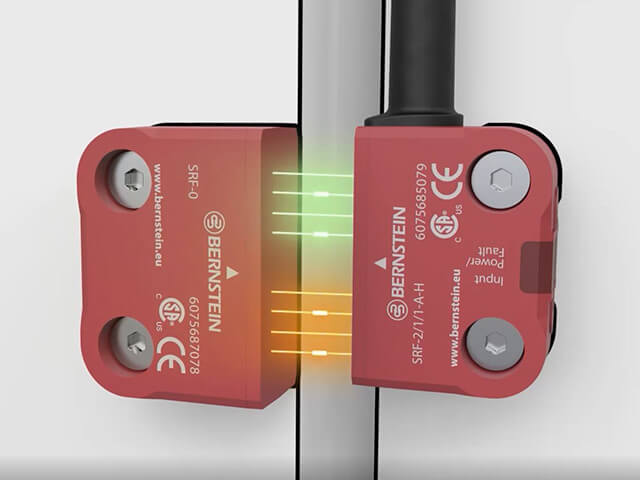If one heard of machine accidents in the past, only few were probably due to the fact that the safety device of a machine (the so-called "interlocking device") would have failed.
It is rather the case that most dangerous situations in handling machines and systems are caused by the operator himself by consciously bypassing this interlocking device.
For this reason it is a very central point in machine safety that the systems are designed in such a way that there is no incentive to bypass the interlocking device and that it is as difficult as possible to defeat it.
What does the term "coding" mean?
At this second point, the concept of coding comes into play.
If, despite all the measures taken, there is still an incentive to defeat the protective device, the machine manufacturer must at least ensure that the safety switches used are not easy to manipulate.
He can solve this challenge with the help of coded actuators: The encoding of the actuator prevents a machine operator from bringing the safety device into the "On" state with easily available objects such as screwdrivers or coins, thus starting a machine movement with the safety guard open.
EN14119 distinguishes between 3 levels of encoding:
Low coding level
One to nine coding options are available for the actuator. In practice, this means that all actuators are coded in the same way, and exactly one encoding option is available.
The low coding level is mainly used for electromechanical safety switches with separate actuators or safety magnet switches. The decisive feature of these systems is that all safety switches fit all actuators.
The advantage is logistical, i.e. spare parts are more readily available. However, this also means that those interlocking devices can be more easily bypassed by the easily available replacement actuators. This is precisely the reason why EN 14119 defines further encoding levels.
High coding level
More than 1000 coding options are available for the actuator. This basically means that the switching device and actuator form a pair. Technically this is usually realised by an RFID transponder system. This prevents the interlocking device from being bypassed by a second actuator.
RFID safety sensors with encoding
Since an RFID safety sensor has redundant microprocessors for its basic function, these can also be used to integrate additional features into the product.
For example, with the BERNSTEIN SRF there is the option of actually assigning the sensor and actuator to one another forever (unique encoding), or allowing the user, to a limited extent, to teach in another actuator (high encoding).
The teach-in process is designed in such a way that it cannot be carried out by the machine operator.
SRF sensors with low coding level (low encoding) are also included in the product family.
